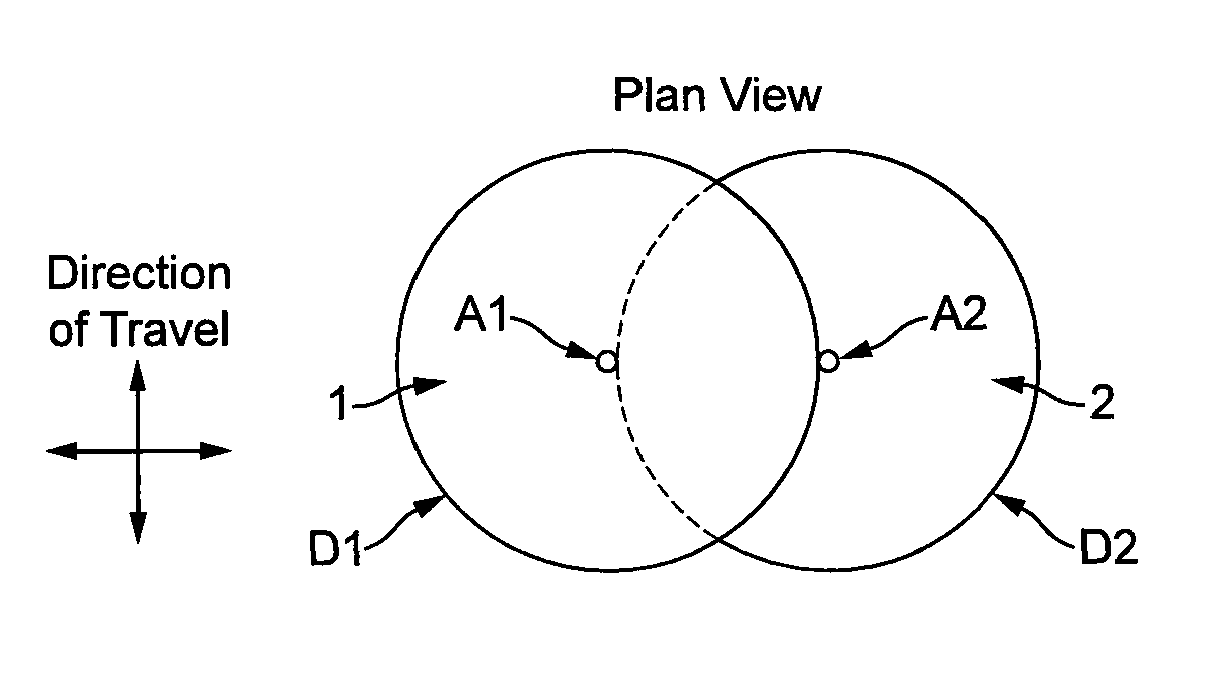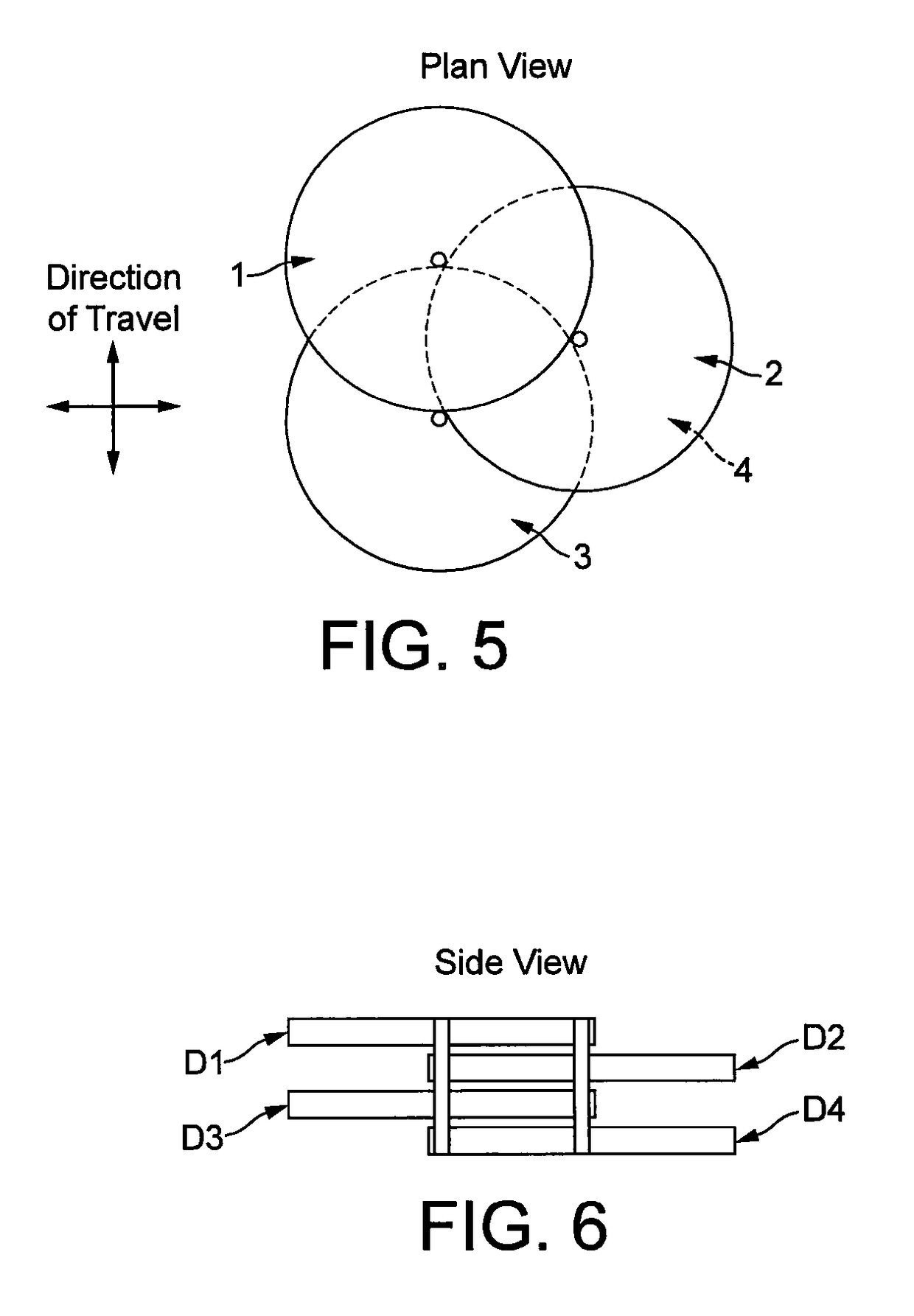Rotor-lift aircraft
a technology of rotors and aircraft, which is applied in the direction of propellers, vertical landing/take-off aircraft, transportation and packaging, etc., can solve the problems of increasing complexity, increasing cost, and limiting the ways in which thrust can be varied, so as to achieve maximum blade envelope overlap, increase the effect of lift and increased stability
- Summary
- Abstract
- Description
- Claims
- Application Information
AI Technical Summary
Benefits of technology
Problems solved by technology
Method used
Image
Examples
Embodiment Construction
[0030]FIGS. 1 to 30 illustrate various configurations for the rotor blades in arrangements with ducted rotors where the ducting is provided by a shroud. It will readily be understood that the same configurations could be employed with other forms of ducting, as described hereinbefore, or in arrangements without any ducting. These Figures are essentially schematic, with the blades or propellers of the respective rotors omitted for clarity, so that all that is visible is the ducting and rotor axes, and, in the case of FIGS. 15 to 30, a schematically illustrated vehicle body.
[0031]Thus in the simplest arrangement of FIGS. 1 and 2, two rotors 1 and 2 rotate about spaced parallel axes A1 and A2 in parallel planes so that the blade envelopes subscribed by the tips of their blades overlap without intermeshing of the blades. Rotors 1 and 2 are ducted, rotor 1 having axis A1 and ducting D1, and rotor 2 having axis A2 and ducting D2. It will be understood, that in the conventional arrangement...
PUM
 Login to View More
Login to View More Abstract
Description
Claims
Application Information
 Login to View More
Login to View More - R&D
- Intellectual Property
- Life Sciences
- Materials
- Tech Scout
- Unparalleled Data Quality
- Higher Quality Content
- 60% Fewer Hallucinations
Browse by: Latest US Patents, China's latest patents, Technical Efficacy Thesaurus, Application Domain, Technology Topic, Popular Technical Reports.
© 2025 PatSnap. All rights reserved.Legal|Privacy policy|Modern Slavery Act Transparency Statement|Sitemap|About US| Contact US: help@patsnap.com



